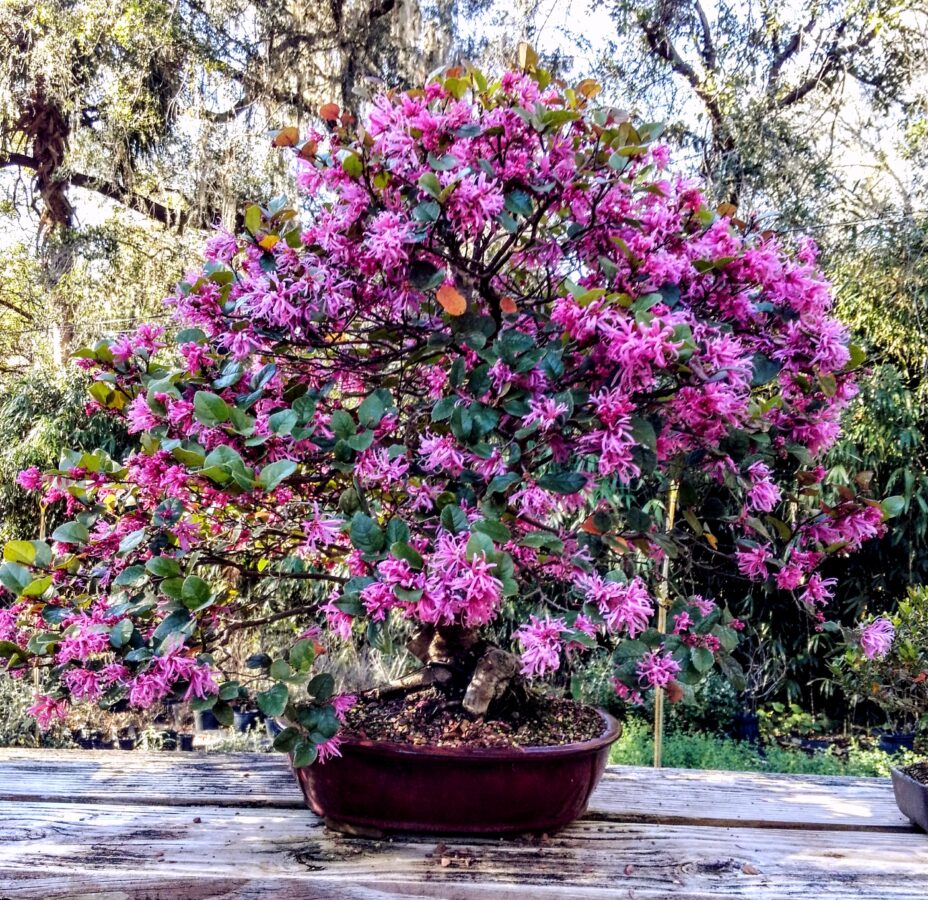
The Loropetalum is a rather new species of shrub for us first coming to the United States in 1989 when some were sent to The U.S. National Arboretum from the Nihonkaki Nursery in Japan. Soon after many varieties were being imported. Around 2000 or so they started to become widely used for landscaping, you probably have some in your yard now. Their new growth comes out a blush to burgundy color depending on the variety, flowering profusely in spring with occasional blooms throughout the summer. They haven’t been used much for bonsai yet, so some of us wanting to work with them can be the first. I have been experimenting with them for a few years now, finding out how much they can or can’t take. I have killed a few but had great success with some also. I haven’t had much luck with the newer dwarf varieties. I had one in my personal collection for 6 years before I was talked out of it, yea sometimes money does talk.
PRUNING... They don’t like to be drastically cut back. From stock, on their first initial hard pruning I remove one half to two thirds of foliage leaving some foliage on each branch. After two to three months I cut back further for better taper and to promote more branching. Their leaves are alternate and branches naturally grow in horizontal layers. Keep older leaves pruned off.
TRAINING... Branches are quite flexible, even the older branches can be bent some. They have thin bark so wire rather loosely and watch for wire scaring. Best trained more into an upright natural silhouette style than single pads for better showing of flowers. Leaves reduce quite readily.
WATERING... They don’t like wet feet, let them dry down some between being watered. Rather fast growers though so keep up with them.
LIGHT... Full sun for best leaf color, flowers and ramification.
FLOWERS... Flower on new wood. Can be force bloomed by cutting whole tree back by a third, will set buds in about three weeks.
Loropetalum chinese var. rubrum has pink, fuschia or red flowers depending on variety.
Loropetalum chinese has white to yellowish flowers.
INSECT/DISEASE... I haven’t experienced any problems with them in pots, but I did notice one in the yard got twig borers this year.
REPOT... Spring through summer. Best not to root-prune hard the first time. Be selective to only remove the oldest roots while leaving as many feeder roots as possible. Gently wash some soil away, but not completely. They prefer an acidic soil, so add 20% more sifted pine bark to your soil. PH of 5.1-5.5 Tree will show chlorosis if soil is not acidic enough.
FERTILIZING... Somewhat heavy feeders, feed with Azalea/Camellia food. Start feeding after spring bloom and throughout growing season to maintain optimal health.
SEASONAL... Cold hardy


